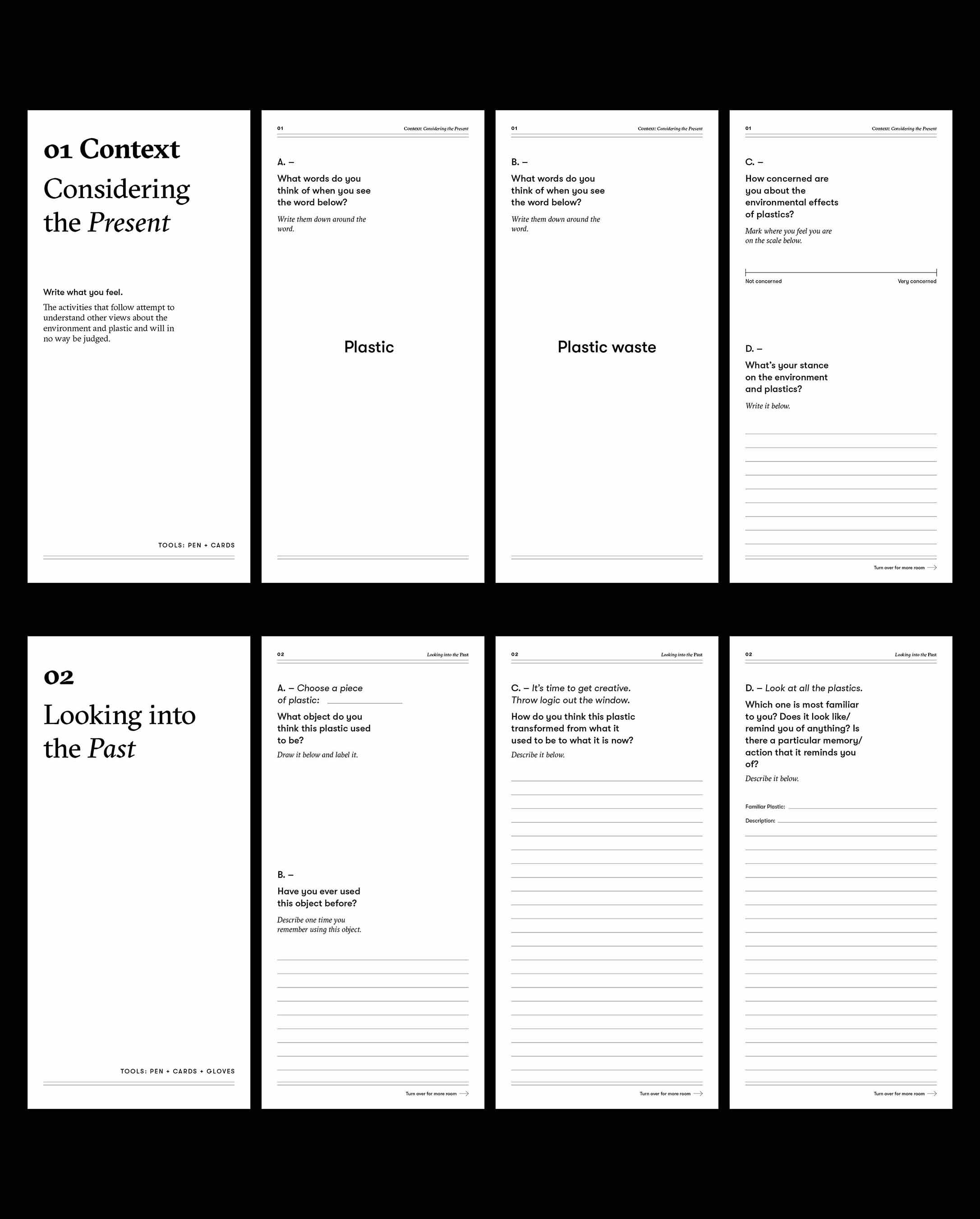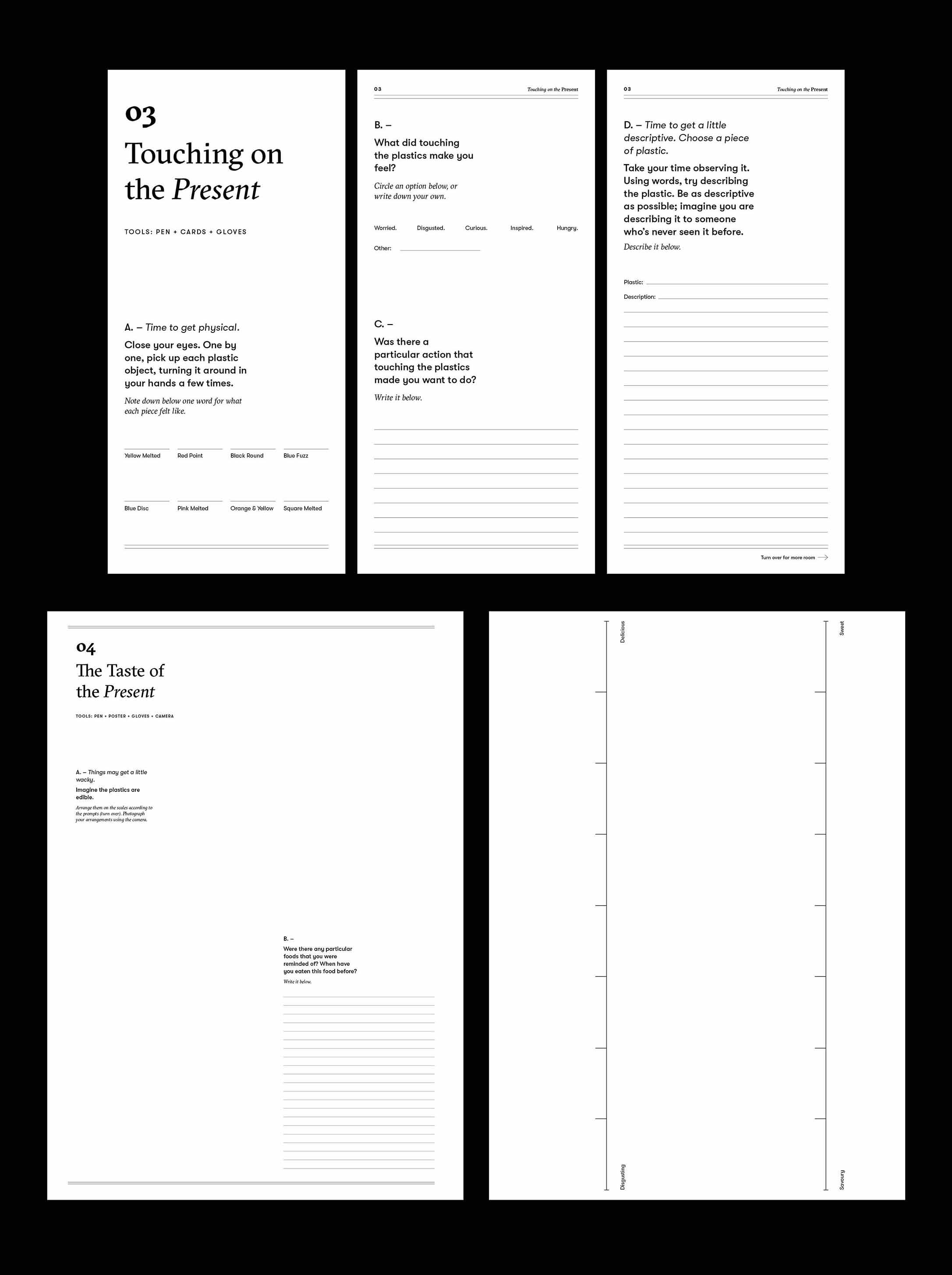Experiment
Cultural probe

Aim
To design an experience in the form of a cultural probe that facilitates ecological and ontological self-reflection about plastics in consumers as participants. This process of self-led engagement with plastics is intended to guide participants to form their own intuitive and genuine responses to these plastics. It hypothesises that interacting with and being in the presence of these plastics will facilitate interest, exploration and ecological dialogue in participants.
Precedents
This experiment takes reflections from the conclusion of Approach Three: Speculative Stories—which asked whether asking consumers to write their own stories would be a more effective way of generating ecological shifts in perceptions regarding plastic—into its design.
Keri Smith’s How to be an Explorer of the World (2008) is also used as a precedent to inform the physical form and tone that this experiment takes.
Keri Smith’s How to be an Explorer of the World (2008) is also used as a precedent to inform the physical form and tone that this experiment takes.
Methods
This probe re-appropriated processes from previous experiments into questions that sought to inspire similar concepts, ideas and thoughts in consumers. It framed questions around activities of observing, describing and forming analogies (from Approach One) to facilitate close engagement in participants with the warped plastics (Figure 47). It also built on ideas from Approach Three including speculative story generation about the future, custodianship and its fragmented storytelling structure and translated this into prompts (Figure 48).
These questions were packaged as a ‘kit’ of prompts that participants could follow and move through (Figure 47, 48 & 49). These prompts particularly sought to encourage physical interaction with the plastic, as it was my own exposure to these artefacts which brought forth deeper ecological considerations of how I relate to plastic waste. The lens of considering the past, present and future of plastics was a method to facilitate a process of reflection, building to an understanding of the deep time span of plastics.
These questions were packaged as a ‘kit’ of prompts that participants could follow and move through (Figure 47, 48 & 49). These prompts particularly sought to encourage physical interaction with the plastic, as it was my own exposure to these artefacts which brought forth deeper ecological considerations of how I relate to plastic waste. The lens of considering the past, present and future of plastics was a method to facilitate a process of reflection, building to an understanding of the deep time span of plastics.



Reflection
My return to physical interactions with the warped plastics as a method highlighted the importance of the tactility and materiality of these plastics in affecting responses.
However, there were too many activities included in this prompt, which reflected a confusion over what it was that I wanted to gain from participants, and what I wanted the outcomes to be. As a result of the amount of activities, the probe felt like a survey at times, and given the length of some of the activities, might have dissuaded participants from actively engaging.
However, there were too many activities included in this prompt, which reflected a confusion over what it was that I wanted to gain from participants, and what I wanted the outcomes to be. As a result of the amount of activities, the probe felt like a survey at times, and given the length of some of the activities, might have dissuaded participants from actively engaging.
Insights
A more streamlined probe—with emphasis on play and creativity—was needed.